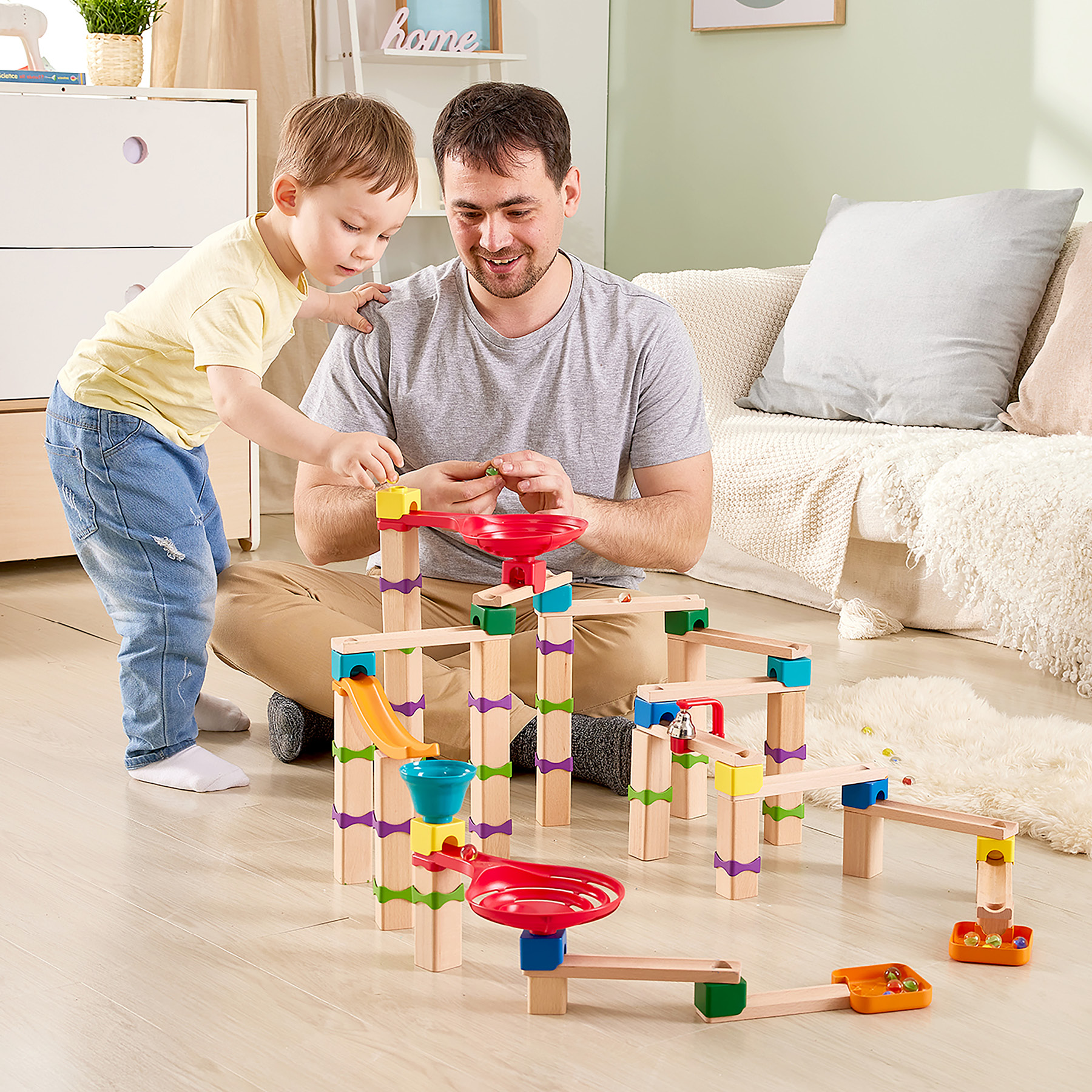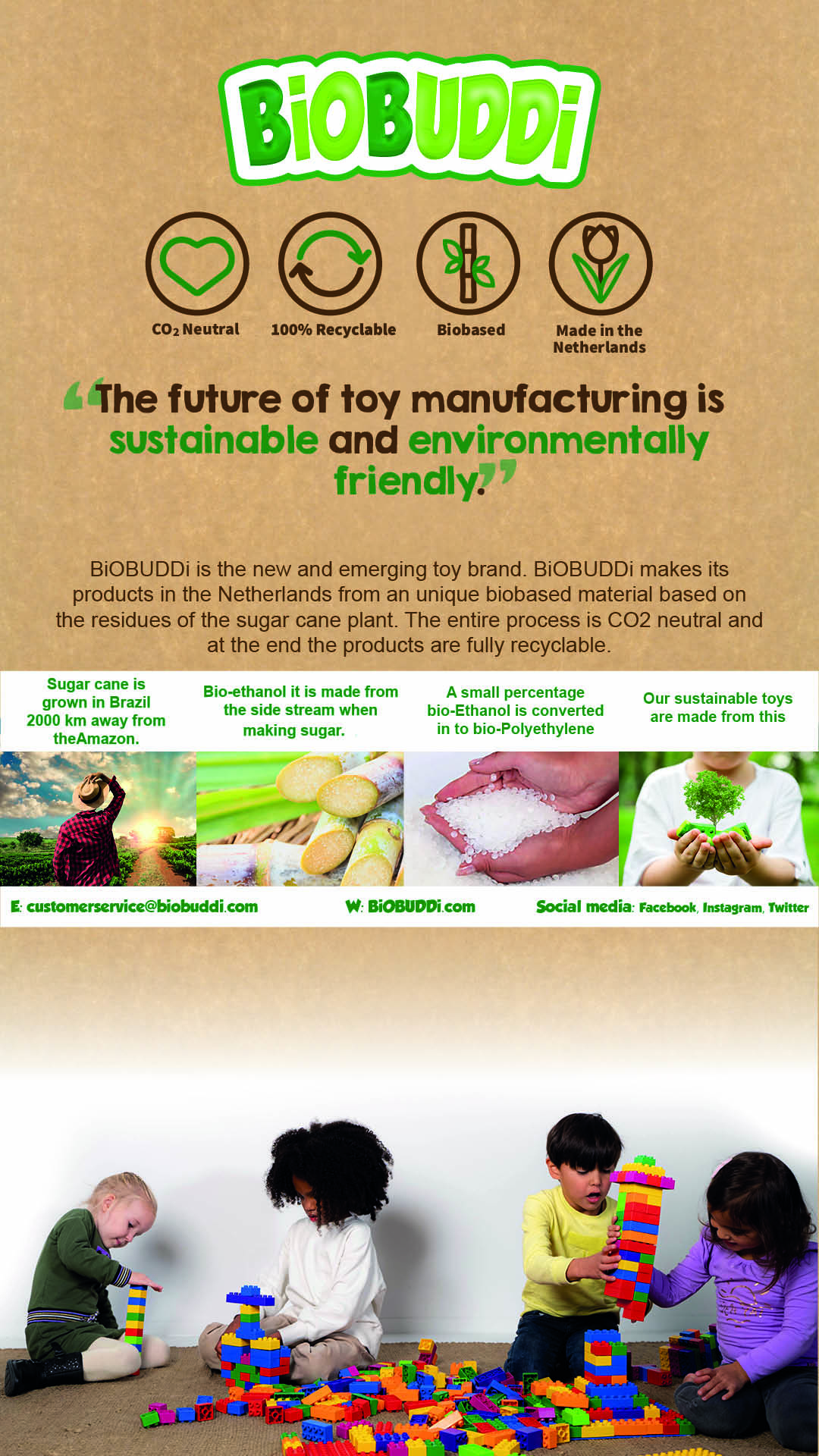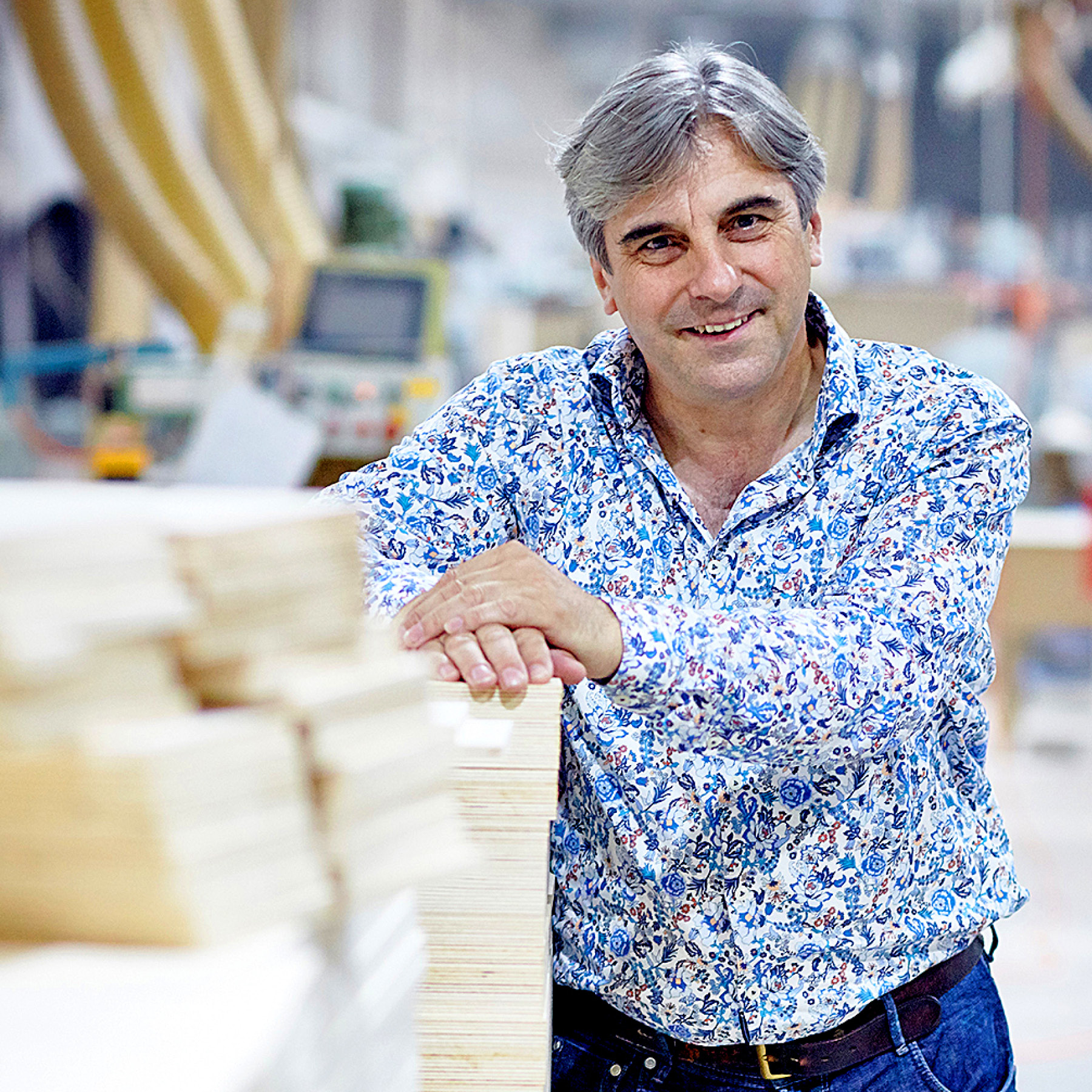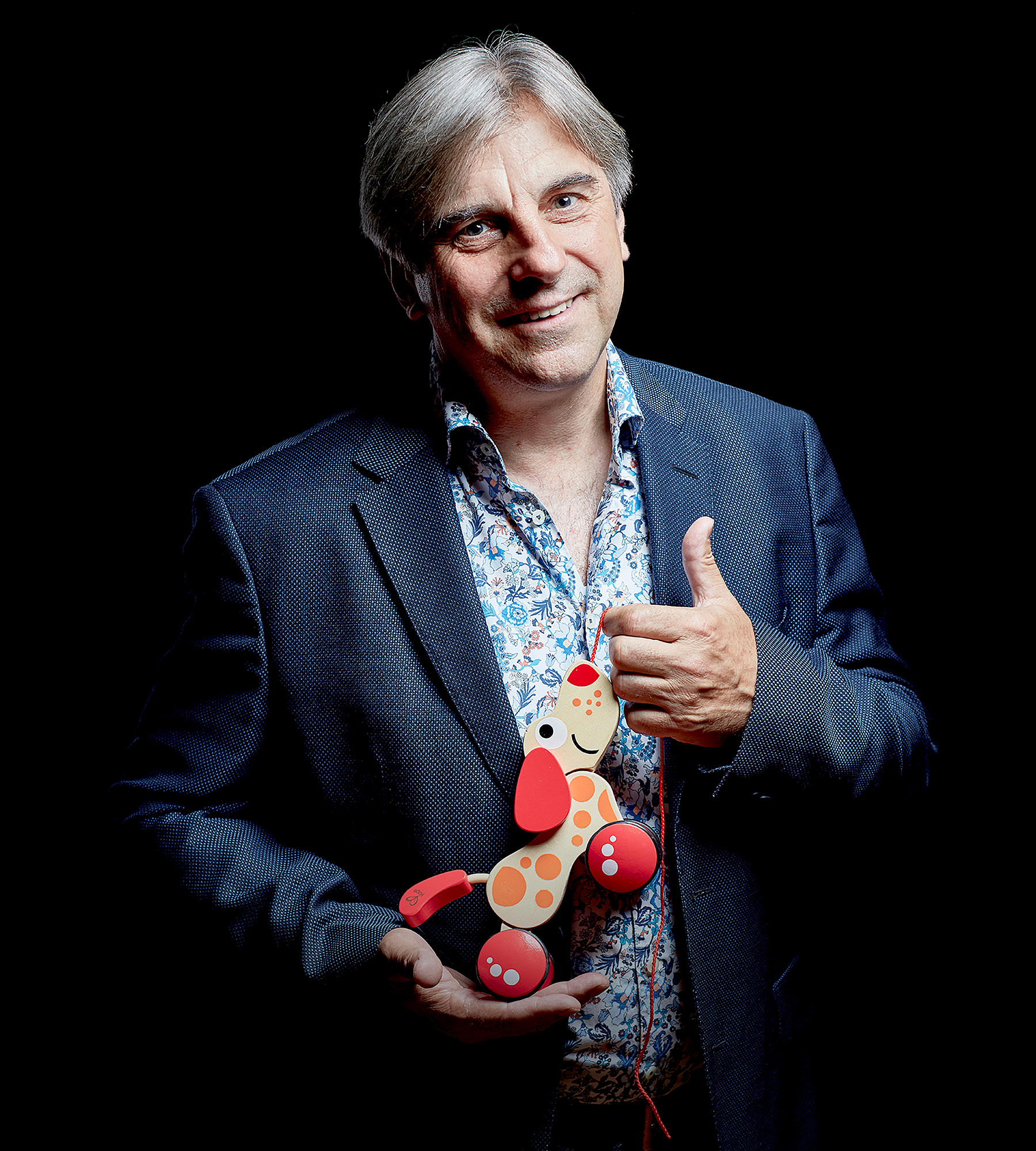Language
You can read the magazine in one of the following languages
Toys have been around for as long as civilization; the earliest toys would have been made from natural materials such as rocks, sticks, wood and clay.
In recent decades they have become multi-dimensional. No longer just about entertaining a child, the best toys also have to educate, be beautiful and be sustainable.
Hape Toys, originally made in Germany, have become sought-after delights among schools, daycare centers, playgroups and children the world over. From sand toys to balance bikes, arts and crafts to train sets and dollhouses, these premium and colorful wooden creations look so pretty that they have almost become status symbols.

Founder and CEO Peter Handstein always saw toys as a way to create a better world through his overarching philosophy “love play, learn,” but he had no idea that his local toy shop Hape Kindergarten Supply – founded with his sister in Germany in 1986 – would grow into a worldwide brand over the three decades that followed.
Today the manufacturer and distributor has offices in Germany, Switzerland, Italy, France, the United Kingdom, Spain, North America, the Netherlands, mainland China and Hong Kong. As of January 2021, it has more than 40 subsidiaries and investment affiliates across the globe.
Hape is currently establishing new markets in South-East Asia, India, Indonesia, Mexico, Chile and Brazil.
But while the German toy manufacturer has grown rapidly to become a leader in its field, this gives Handstein little comfort; like a child in a race, he’s always looking forward. If not, he says, you get overtaken.
“We took the lead in our industry five, six or seven years ago. And the key to leadership is being innovative, being ahead of the trend,” he says.
However, it’s not easy for big, leading companies to remain dynamic.
“When you have hundreds or thousands of people, it can get very structured and static,” he explains. “You need to question how to revitalize it. Having a ‘vitalization team’ to act like the new kids on the block and challenge the organization can be really helpful to remain awake and see what’s coming.”
As well as a team focused on the future, big companies also need a team of leadership in the present. A CEO with too much power does not benefit the organization, Handstein warns.
“Don’t make yourself too important. I call myself Founder and CEO, but I feel more of a coach and the people who are on the field, they’re running the game. The coach has to make sure that everybody has the best position for them, that they’re all working for the same goal,” he says.
Making sure you have the right people means hiring people that understand the local market.

“The people we hire in Mexico will have a different mindset to those we hire in India or Indonesia,” he says. “We have a toy business but I believe we’re also in the people business, and people are a key factor of success.”
While Hape tries to localize its expertise, it also localizes its products. Its manufacturing hub is in China, but not all countries receive the same toys.
“As a global manufacturer, we cannot sit in one place, we serve the world. We have to serve people where they are,” Handstein says.
Serving the world also means helping to improve its future.
“We often say at Hape, we like to make the world a better place, and we have to start with our children,” he says.
Hape has been making eco-friendly toys long before ‘sustainable’ became a buzzword. Since 2022, all new products with wooden parts are Forest Stewardship Council (FSC) certified.
With one eye on the future, Hape has also built several schools globally and continues to run an academy in China that offers a better education to children from over 20 regions.
Partnerships with like-minded organizations are vital, Handstein says, because making the world a better place can’t be done alone.
Hape enjoys 20 strategic partnerships around the world, including with cork provider Amorim, multimedia product manufacturer Baby Einstein and toy and baby product manufacturer Kids2.
Its joint venture with Amorim in Portugal has enabled Hape to lean into the production of cork, known as one of the world’s most sustainable materials.
“Every product you potentially produce out of cork is carbon negative, not carbon neutral,” Handstein says.
There is no need to cut the cork tree to source cork; you simply remove its skin, which it regrows within a few years, he explains.
“You can do this process again and again, so the trees are 150 or 200 years old. Amorim is number one in cork and we are number one in wooden toys. So, if these two factors come together, you’re going to create something great,” he adds.

Hape invests heavily in its alliances. Over the years, many suppliers like Amorim have become partners.
“We have a lot of partners that have become joint ventures, where we contribute ideas for the future, so it’s a win–win situation,” he says.
“Today a lot of our suppliers are in their next generation already, so they have new people coming up with fresh ideas. So I feel our company’s drive comes not only from us but also from our quality partnerships.”
Handstein believes it’s important that companies share the same vision with their partners and suppliers.
“When you have a supply chain your partners need to be aligned with your goals. You need to be working together, like a family,” he says. “It’s not about short-term achievements, it’s about a long-term strategy.”

